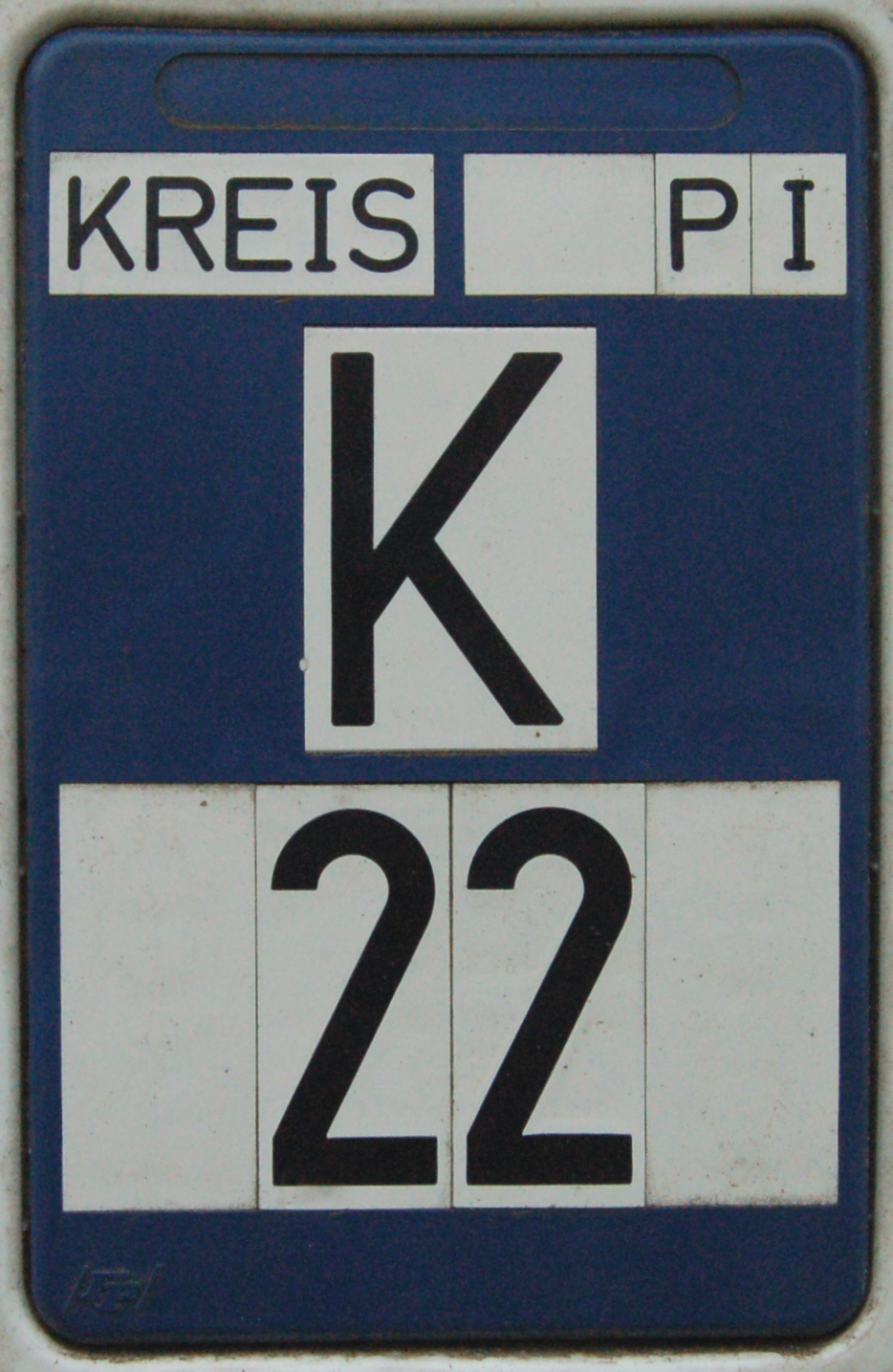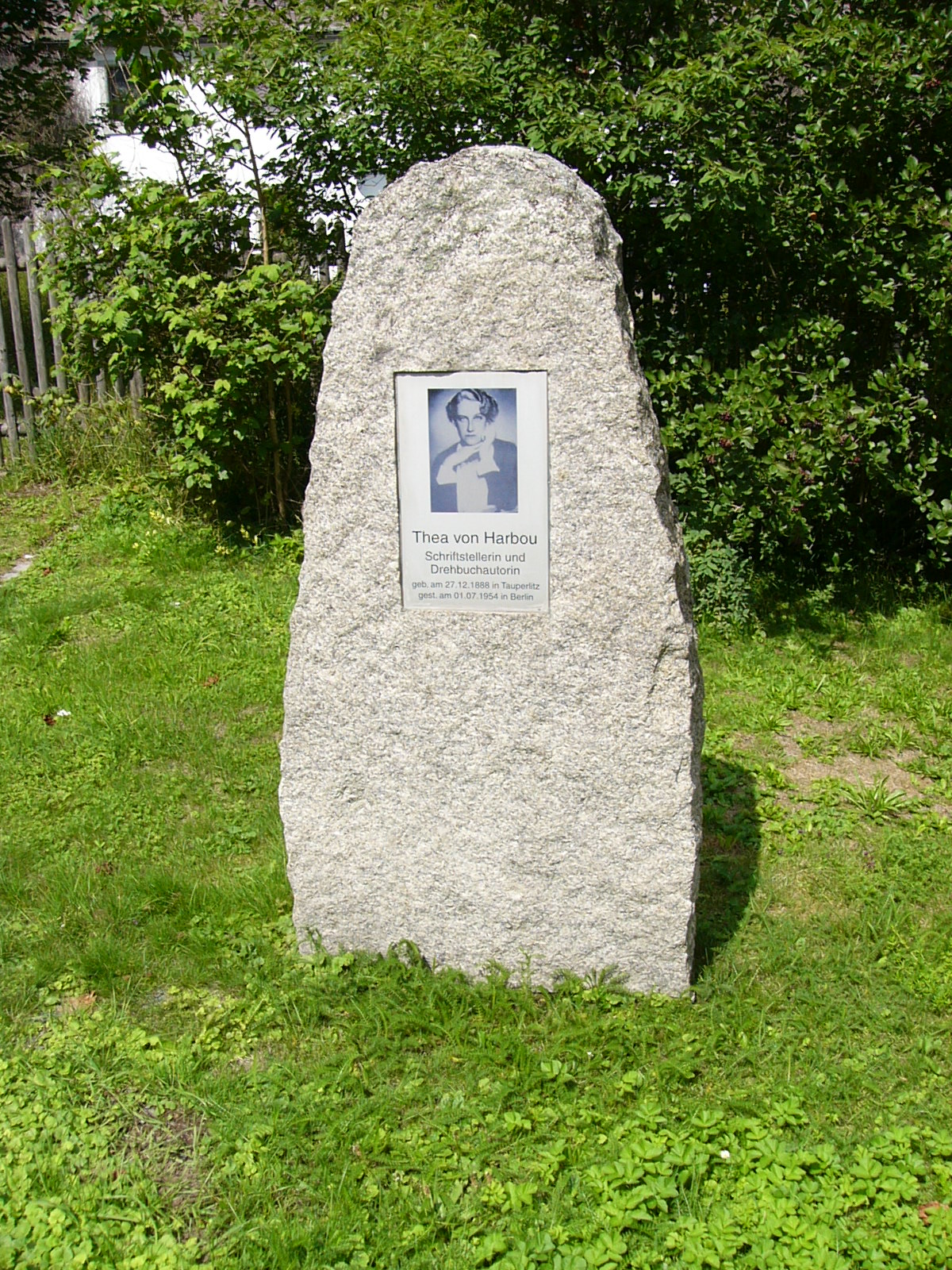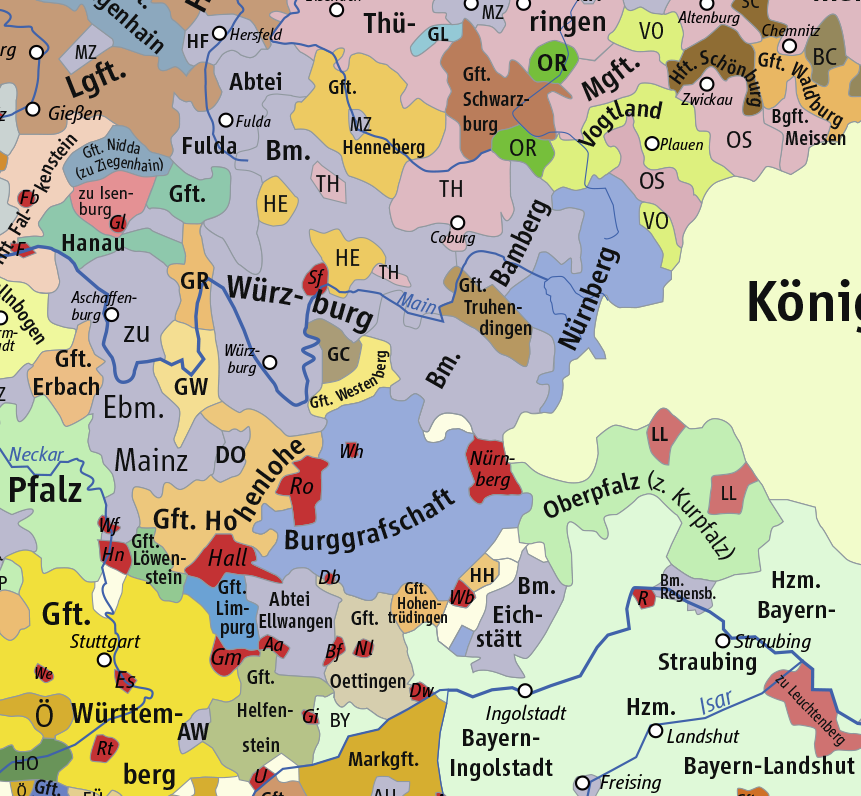|
Tauperlitz Harbou 056
Tauperlitz and Neutauperlitz are two merged former districts in Bavaria, now in the municipality of Döhlau in the district of Hof. The original settlement grew up along an old roadway, and is first mentioned in 1348 in a letter of foundation by Friedrich von Hohenlohe, bishop of Bamberg. The motte-and-bailey castle of Tauperlitz (''Turmhügelburg Tauperlitz''), not far from the Southern Regnitz river, is significant in terms of settlement history. In the Margraviate of Brandenburg-Kulmbach there was a manor here that formed part of the '' Vogtländische Ritterschaft'' (an association of knightly estates in the Vogtland) and was endowed with the legal right of direct access to the higher courts (''Schriftsässigkeit''). The ''Erlöserkirche'' ("Church of the Redeemer") belongs to the Evangelical-Lutheran Deanery of Hof. Local noble families like the Uttenhofen, the Rabensteiner zu Döhlau and the Waldenfels were based here. The Rabensteiner occupied Tauperlitz farm in 1398, an ... [...More Info...] [...Related Items...] OR: [Wikipedia] [Google] [Baidu] |
Bavaria
Bavaria, officially the Free State of Bavaria, is a States of Germany, state in the southeast of Germany. With an area of , it is the list of German states by area, largest German state by land area, comprising approximately 1/5 of the total land area of Germany, and with over 13.08 million inhabitants, it is the list of German states by population, second most populous German state, behind only North Rhine-Westphalia; however, due to its large land area, its population density is list of German states by population density, below the German average. Major cities include Munich (its capital and List of cities in Bavaria by population, largest city, which is also the list of cities in Germany by population, third largest city in Germany), Nuremberg, and Augsburg. The history of Bavaria includes its earliest settlement by Iron Age Celts, Celtic tribes, followed by the conquests of the Roman Empire in the 1st century BC, when the territory was incorporated into the provinces of Ra ... [...More Info...] [...Related Items...] OR: [Wikipedia] [Google] [Baidu] |
Kreisstraße
A Kreisstraße (, or 'county road') is a class of road in Germany. It carries traffic between the towns and villages within a ''Districts of Germany, Kreis'' or district or between two neighbouring districts. In importance, the ''Kreisstraße'' ranks below a ''Landesstraße'' (or, in Bavaria and Saxony, a ''Staatstraße'', i.e. a state road), but above a ''Gemeindestraße'' or "local road". ''Kreisstraßen'' are usually the responsibility of the respective rural district (''Landkreis'') or urban district (''Kreisfreie Stadt''), with the exception of high streets through larger towns and villages. Kreisstraßen are usually dual-lane roads but, in a few cases, can be built as limited-access dual carriageways in densely populated areas. Numbering Unlike local roads (''Gemeindestraßen'') the ''Kreisstraßen'' are invariably numbered, but their numbering is not shown on signs. The abbreviation is a prefixed capital letter K followed by a serial number. In most states of Germany, st ... [...More Info...] [...Related Items...] OR: [Wikipedia] [Google] [Baidu] |
Metropolis (1927 Film)
''Metropolis'' is a 1927 German expressionist cinema, German expressionist science-fiction film, science-fiction silent film directed by Fritz Lang and written by Thea von Harbou in collaboration with Lang from von Harbou's Metropolis (novel), 1925 novel of the same name (which was intentionally written as a film treatment, treatment). It stars Gustav Fröhlich, Alfred Abel, Rudolf Klein-Rogge, and Brigitte Helm. Erich Pommer produced it in the Babelsberg Studio for UFA GmbH, Universum Film A.G. (UFA). ''Metropolis'' is regarded as a pioneering science-fiction film, being among the first Feature film, feature-length ones of that genre. Filming took place over 17 months in 1925–26 at a cost of more than five million Reichsmarks, or the equivalent of about € million. Made in Germany during the Weimar Republic, Weimar period, ''Metropolis'' is set in a futuristic urban dystopia and follows the attempts of Freder, the wealthy son of the city master, and Maria, a saintly figure to ... [...More Info...] [...Related Items...] OR: [Wikipedia] [Google] [Baidu] |
Fritz Lang
Friedrich Christian Anton Lang (; December 5, 1890 – August 2, 1976), better known as Fritz Lang (), was an Austrian-born film director, screenwriter, and producer who worked in Germany and later the United States.Obituary ''Variety Obituaries, Variety'', August 4, 1976, p. 63. One of the best-known ''émigrés'' from Germany's school of German expressionist cinema, Expressionism, he was dubbed the "Master of Darkness" by the British Film Institute. He has been cited as one of the most influential filmmakers of all time. Lang's work spans five decades, from the Expressionist silent films of his first German creative period to his short stay in Paris and his work as a Hollywood director to his last three films made in Germany. Lang's most celebrated films include the futuristic science-fiction film ''Metropolis (1927 film), Metropolis'' (1927) and the influential ''M (1931 film), M'' (1931), a film noir precursor. His 1929 film ''Woman in the Moon'' showcased the use of a mult ... [...More Info...] [...Related Items...] OR: [Wikipedia] [Google] [Baidu] |
Metropolis (novel)
''Metropolis'' is a 1925 science fiction literature, science fiction novel by the German writer Thea von Harbou. The novel was a Film treatment, treatment for Fritz Lang's 1927 film ''Metropolis (1927 film), Metropolis'', on which von Harbou and Lang collaborated in 1924. Premise The story is set in a technologically advanced city, which is sustained by the existence of an exploited class of labourers who live underground, far away from the gleaming surface world. Freder, the son and heir of Joh Fredersen, one of the city's founders, falls in love with Maria, a girl from the underground. Their romance takes place against the growing threat of civil war between the labourers and the armies of the founders, and the question of whether a lasting peace can be found. Publication The novel was serialised in the magazine ''Illustriertes Blatt'' in 1925, accompanied by screenshots from the upcoming film adaptation. It was published in book form in 1926 by August Scherl. An English transla ... [...More Info...] [...Related Items...] OR: [Wikipedia] [Google] [Baidu] |
Thea Von Harbou
Thea Gabriele von Harbou (27 December 1888 – 1 July 1954) was a German screenwriter, novelist, film director, and actress. She is remembered as the screenwriter of the science fiction film classic ''Metropolis'' (1927) and for the 1925 novel on which it was based. Von Harbou collaborated as a screenwriter with film director Fritz Lang, her husband, during the period of transition from silent to sound films. Early life, family, and education Thea von Harbou was born in Tauperlitz (now part of Döhlau), Bavaria, in 1888, into a family of minor nobility and government officials, which gave her a level of sophisticated comfort. As a child, she was educated in a convent by private tutors who taught her several languages as well as piano and violin. She was a child prodigy. Her first works, a short story published in a magazine and a volume of poems published privately, focused on perceptions of art, subjects considered unusual for a girl of thirteen. Despite her privile ... [...More Info...] [...Related Items...] OR: [Wikipedia] [Google] [Baidu] |
Byre-dwelling
A byre-dwelling ("byre"+ "dwelling") is a farmhouse in which the living quarters are combined with the livestock and/or grain barn under the same roof. In the latter case, the building is also called a housebarn in American English. This kind of construction is found in archaeological sites in northwestern Europe from the Bronze Age. It was also used in more modern times by Mennonites, originating from the Netherlands. Distribution Austria The Bregenzerwälderhaus from the Bregenz Forest in Vorarlberg is an example for a byre-dwelling. The stable and the usually two-storey house are under one roof. Germany The generic German term is ''Wohnstallhaus'' from ''Wohnung'' ("dwelling"), ''Stall'' ("byre", "sty)" and ''Haus'' ("house"). From the Iron Age onwards the longhouse, developed from the byre-dwellings of the Bronze Age with its domestic area and adjacent cattle bays, was found across the North German Plain. As a result of the keeping of ever larger herds of cattle, ... [...More Info...] [...Related Items...] OR: [Wikipedia] [Google] [Baidu] |
Vogtland
Vogtland (; ) is a region spanning the German states of Bavaria, Saxony and Thuringia and north-western Bohemia in the Czech Republic. It overlaps with and is largely contained within Euroregio Egrensis. The name alludes to the former leadership by the Vögte ("advocates" or "lords protector") of Weida, Gera and Plauen. Geography Natural geography The landscape of the Vogtland is sometimes described as idyllic, thanks to its fields, meadows and wooded hilltops. In the south and southeast, Vogtland rises to a low or mid-height mountain range also called ''Oberes Vogtland'', or Upper Vogtland. Here, monocultural coniferous forest is the predominant form of vegetation. The Vogtland's highest mountain is Schneehübel, reaching 974 metres; another remarkable landmark is the Schneckenstein, 883 m above sea level, which gained some renown for its (falsely) alleged unique abundance of topaz crystals. Its mountains spread from Ore Mountains in the south-east to Ficht ... [...More Info...] [...Related Items...] OR: [Wikipedia] [Google] [Baidu] |
Manorialism
Manorialism, also known as seigneurialism, the manor system or manorial system, was the method of land ownership (or "Land tenure, tenure") in parts of Europe, notably France and later England, during the Middle Ages. Its defining features included a large, sometimes fortified manor house in which the lord of the manor and his dependants lived and administered a rural estate, and a population of labourers or Serfdom, serfs who worked the surrounding land to support themselves and the lord. These labourers fulfilled their obligations with labour time or in-kind produce at first, and later by cash payment as commercial activity increased. Manorialism was part of the Feudalism, feudal system. Manorialism originated in the Roman villa system of the Late Roman Empire, and was widely practised in Middle Ages, medieval western Europe and parts of central Europe. An essential element of feudal society, manorialism was slowly replaced by the advent of a money-based market economy and new ... [...More Info...] [...Related Items...] OR: [Wikipedia] [Google] [Baidu] |
Döhlau
Döhlau is a municipality in Upper Franconia in the district of Hof in Bavaria in Germany. It lies on the Saale River The Saale (), also known as the Saxon Saale ( ) and Thuringian Saale (), is a river in Germany and a left-bank tributary of the Elbe. It is not to be confused with the smaller Franconian Saale, a right-bank tributary of the Main, or the Saale .... References Hof (district) {{Hofdistrict-geo-stub pl:Döhlau ... [...More Info...] [...Related Items...] OR: [Wikipedia] [Google] [Baidu] |
Margraviate Of Brandenburg-Kulmbach
The Principality of Bayreuth () or Margraviate of Brandenburg-Bayreuth (''Markgraftum Brandenburg-Bayreuth'') was an immediate territory of the Holy Roman Empire, ruled by a Franconian branch of the Hohenzollern dynasty. Since Burgrave Frederick VI of Nuremberg was enfeoffed with the Margraviate of Brandenburg in 1415/17, the Hohenzollern princes transferred the margravial title to their Franconian possessions, though the principality never had been a march. Until 1604 they used Plassenburg Castle in Kulmbach as their residence, hence their territory was officially called the Principality of Kulmbach or Margraviate of Brandenburg-Kulmbach until the Empire's dissolution in 1806. Geography The Kulmbach-Bayreuth principality arose from the northern uplands (''Oberland'') of the former Burgraviate of Nuremberg, while the southern lowlands (''Unterland'') formed the Principality of Ansbach. The final border demarcation was settled by the 1541 House Treaty of Regensburg, adding so ... [...More Info...] [...Related Items...] OR: [Wikipedia] [Google] [Baidu] |






